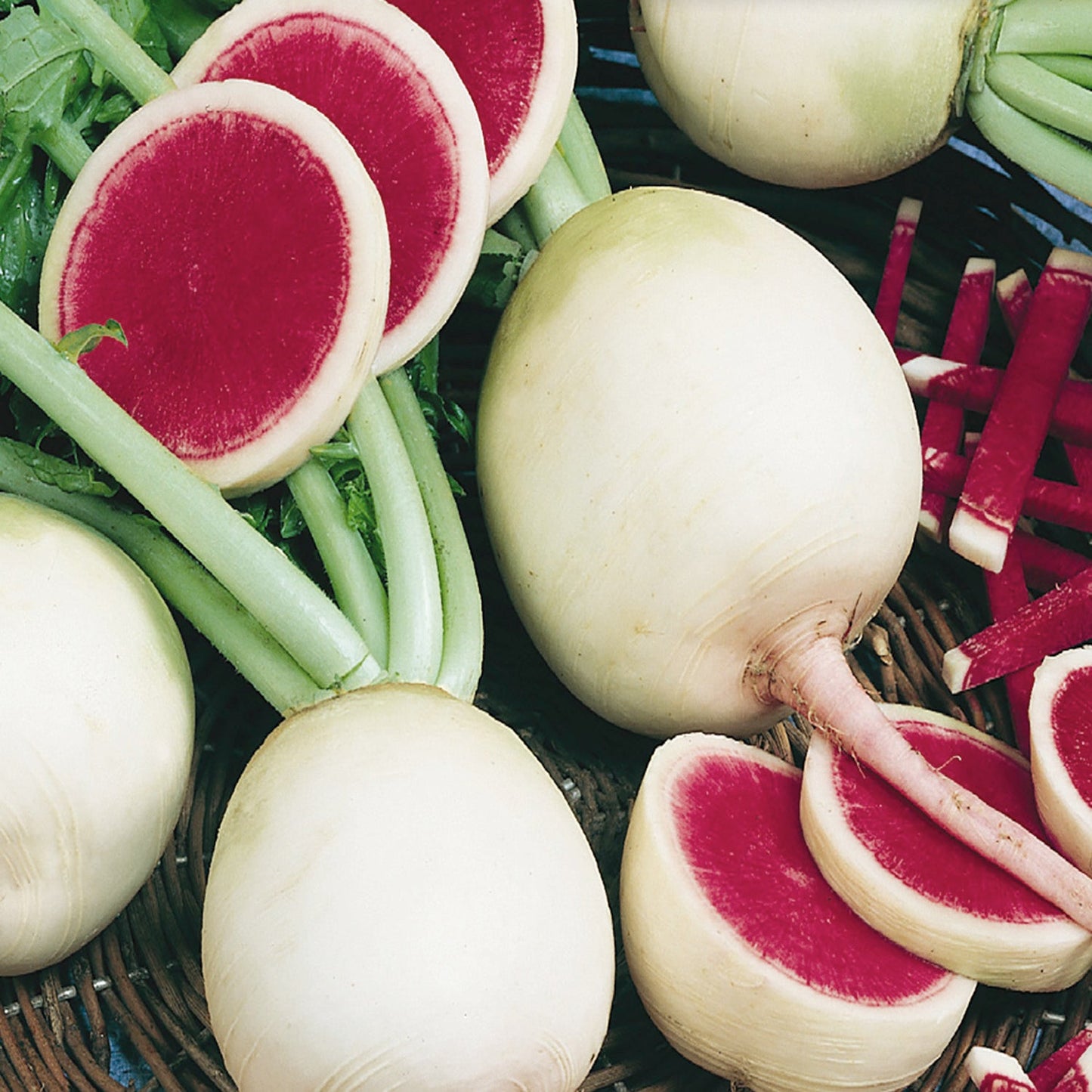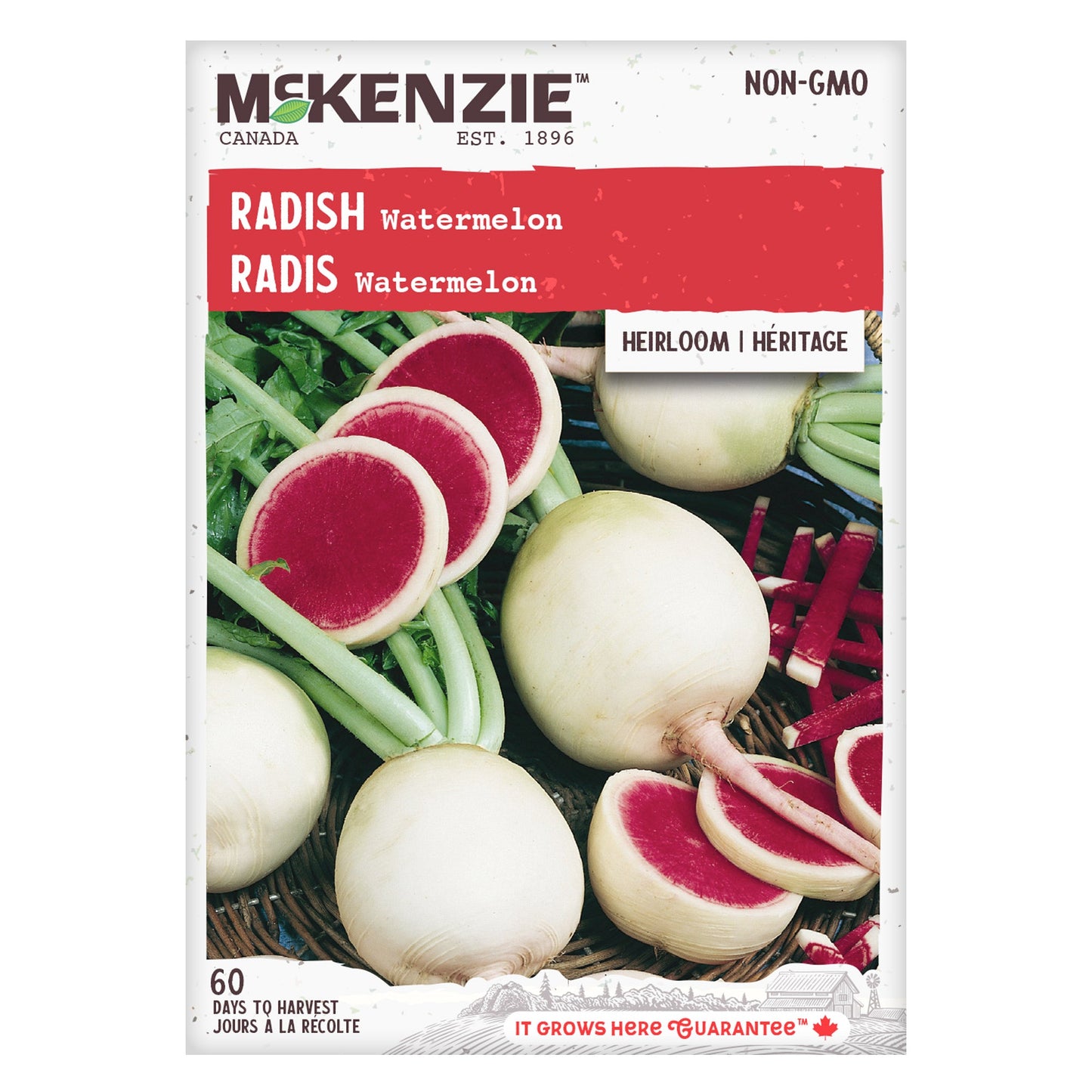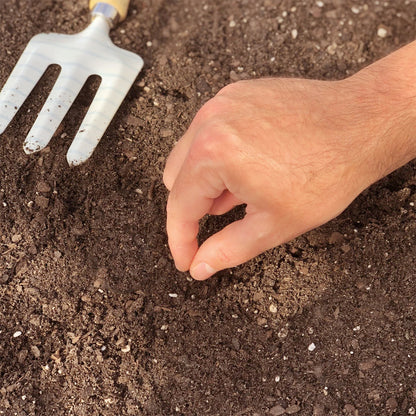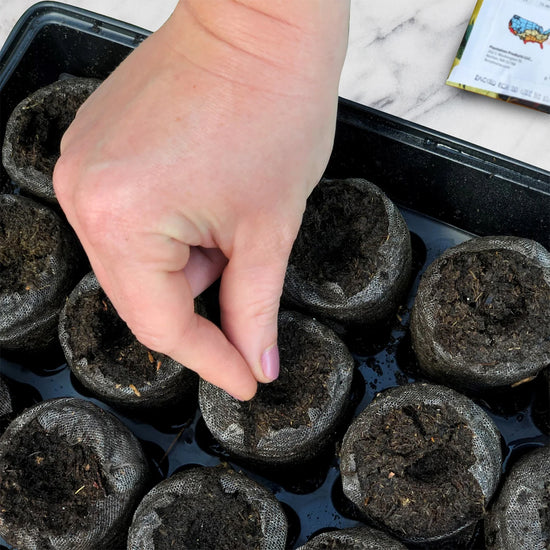Share
McKenzie
Radish, Watermelon Seeds Raphanus sativus
Radish, Watermelon Seeds Raphanus sativus
Couldn't load pickup availability
Watermelon radish originates in China.
This ball-shaped radish has a unique color pattern. Its deep green shoulder, white skin, and bright red flesh will have you questioning if you're growing small watermelons! The flesh is crispy, has a mild and sweet flavor and grows best under cooler conditions. These radishes are perfect for adding color and taste to salads, stir-fries, and pickling recipes.
- SKU: 130124
- Common Name: Radish
- Botanical Name: Raphanus sativus
- Plant Type: Vegetable
- Plant Lifecycle: Annual
- Fill Weight (grams): 1.25 g
- Approximate Seed Count: 75-80
- Planting Method: Direct Sow
- Water Needs: Average 2.5-5 cm (1-2") per week
- Landscape Use: Edible Garden
- Growth Habit: Root
- Companion Planting: Plant near lettuce, nasturtium, peas. Peas provide nitrogen to soil which will benefit radish.
- Flavor: Milder and a little less peppery vs regular radish
- Preparation Ideas: Add zip to green salads with the addition of sliced watermelon radish. To experience the full flavor use a citrus based vinaigrette.
Radish is a cool season crop and seeds can be sown directly in the garden in early Spring as soon as the soil can be worked. Soil temperature (not air temperature) should be between 10-16° C (50-60°F) . Space seeds and plant to the depth indicated below. Press seeds into the soil to ensure good contact and cover with 2.5 cm (1") of soil. After planting, water seeds with a gentle mist or shower. It is critical to keep the soil consistently moist, but not soggy during germination. When your seedlings reach a height of a few centimetres (inches) and have developed 2 or 3 pairs of leaves, it is important to thin them out, according to the plant spacing indicated below. Crowded radishes do not grow well, and you’ll end up getting small inedible roots. Do not allow the soil to become dry, as young plants have underdeveloped roots and can quickly dehydrate, particularly in windy conditions. Weed often as weeds can quickly crowd out radishes. Radish grows quickly and more seeds can be succession planted every 10 days until the temperature exceeds 21°C (70°F). Once the temperature rises, radish tends to bolt. Planting can resume when the temperature turns cooler at the end of Summer and early Fall.
- Planting Depth: 1.3 cm (1/2")
- Seed Spacing: Sow radish seeds roughly 1.3 cm (1/2") apart in rows, keeping rows approximately 30 cm (12") apart.
- Plant Spacing: 5 cm (2")
- Instructions for Nutrient Care: Feed plants SUPERthrive once per week. Mix 1.2 ml (1/4 tsp) per 4L (1 gallon) of water in a watering can and apply solution to the base of the plants.
- Consistent moisture is key. Do not let the soil dry out which can result in poor flavor and a tough texture. Soil that's too wet can cause the roots to split and rot.
- Do not leave radishes in the ground past their maturity; they can go from crisp and crunchy to woody and excessively spicy within a matter of days. Follow the seed packet for the number of days to maturity.
- Hot weather can cause the plants to bolt (a flower forms and it goes to seed) and decline in quality and bulbs will stop forming. They can get tough and woody or spongy with hollow centers.










